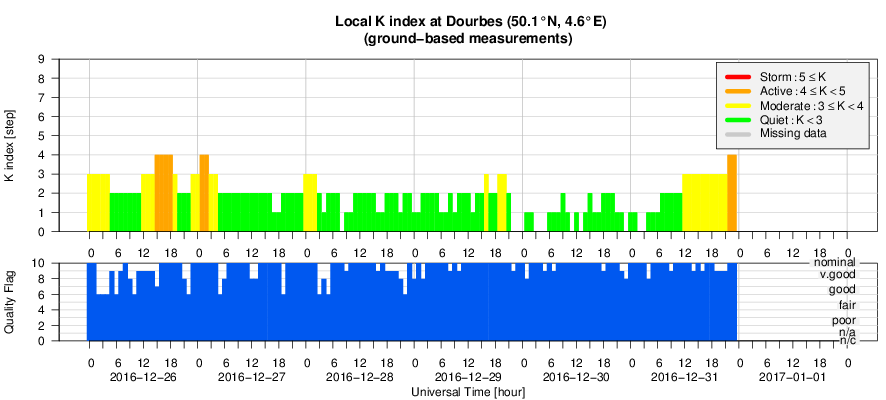- Table of Content
- 1.Spotless Days ...
- 2.Review of sola...
- 3.The Internatio...
- 4.PROBA2 Observa...
- 5.Review of geom...
- 6.Geomagnetic Ob...
- 7.Review of iono...
- 8.Future Events
2. Review of solar activity
3. The International Sunspot Number
4. PROBA2 Observations (26 Dec 2016 - 1 Jan 2017)
5. Review of geomagnetic activity
6. Geomagnetic Observations at Dourbes (26 Dec 2016 - 1 Jan 2017)
7. Review of ionospheric activity (26 Dec 2016 - 1 Jan 2017)
8. Future Events
Spotless Days page
Regular solar observers have noticed that since mid-2016, the Sun has occasionally been devoid of sunspots. In fact, the month of December counted another 6 spotless days (see SDO-image from 10 December underneath). These spotless disks will gradually become a familiar feature as the solar cycle is heading for its next minimum, currently expected by the end of this decade. The number of spotless days can vary significantly from one solar cycle transit to another. For example, during the previous minimum (around 2008), no less than 817 spotless days were recorded, whereas the minimum period leading into solar cycle 23 (around 1996) counted only 309 such blemishless days.
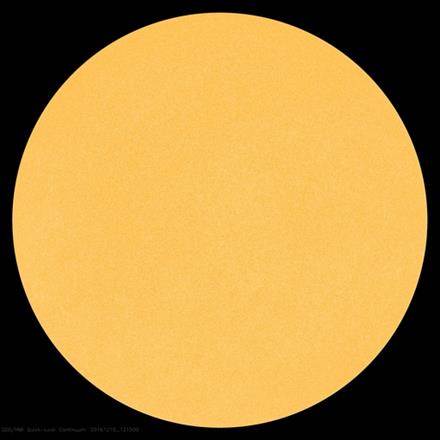
As the current solar cycle 24 will gradually give way to the new solar cycle 25, several consecutive days and even weeks without sunspots will become the norm. In order to have an idea on the number of spotless days, and how these numbers compare to past solar cycles, the SILSO folks have created a “Spotless Days page” (http://sidc.oma.be/silso/spotless ). This page contains graphs and tables on the accumulated number of spotless days, stretches of spotless days, and comparisons to other solar cycles – all supplemented with a word of explanation.
The previous minimum surprised scientists and solar observers by being the deepest in nearly 90 years. Will the upcoming solar cycle minimum show as many spotless days, or will solar cycle 25 take off much faster than expected? This “Spotless Days page” (http://sidc.oma.be/silso/spotless ) will provide you with a front-row seat on the current status of the solar cycle minimum and the number of spotless days. Enjoy!
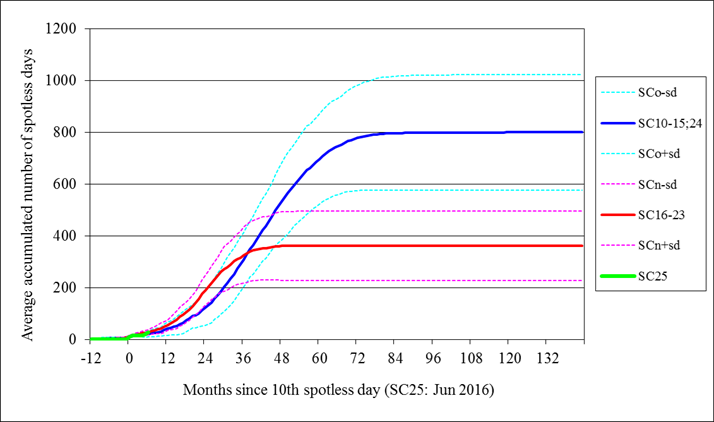
Graph above shows the accumulated number of spotless days during the current solar cycle transition (green line), compared to the average of the solar cycles 16-23 (red line) and the solar cycles 10-15 and 24 (blue line). The dashed lines represent the resp. standard deviations. There are still many spotless days awaiting us...
Review of solar activity
Solar activity was very low during the entire week, without any C, M or X-class flares and the GOES X-ray flux background below B level. No earthbound coronal mass ejections were registered.
Underneath a white light (left) and an extreme ultraviolet (right) image of the Sun as seen by SDO on 28 December, featuring a small sunspot region near the northwest limb and a positive equatorial coronal hole near the solar disk centre.
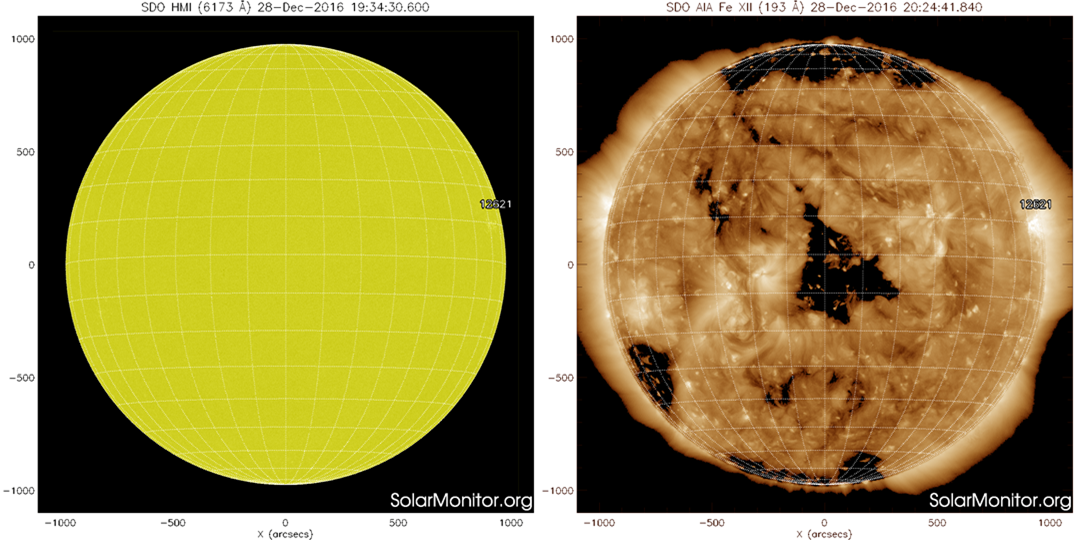
The International Sunspot Number
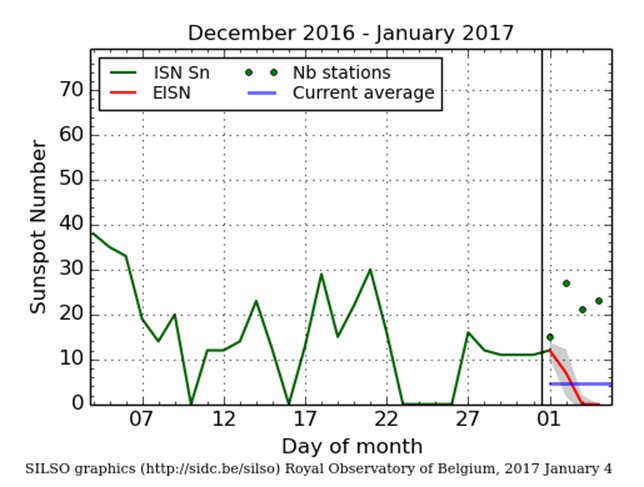
The daily Estimated International Sunspot Number (EISN, red curve with shaded error) derived by a simplified method from real-time data from the worldwide SILSO network. It extends the official Sunspot Number from the full processing of the preceding month (green line). The plot shows the last 30 days (about one solar rotation). The horizontal blue line shows the current monthly average, while the green dots give the number of stations included in the calculation of the EISN for each day.
PROBA2 Observations (26 Dec 2016 - 1 Jan 2017)
Solar Activity
Solar flare activity fluctuated remained very low during the week.
In order to view the activity of this week in more detail, we suggest to go to the following website fromwhich all the daily (normal and difference) movies can be accessed: http://proba2.oma.be/ssa
This page also lists the recorded flaring events.
A weekly overview movie can be found here (SWAP week 353).
http://proba2.oma.be/swap/data/mpg/movies/weekly_movies/weekly_movie_2016_12_26.mp4
Details about some of this week's events, can be found further below.
If any of the linked movies are unavailable they can be found in the P2SC movie repository here
http://proba2.oma.be/swap/data/mpg/movies/
Saturday Dec 29
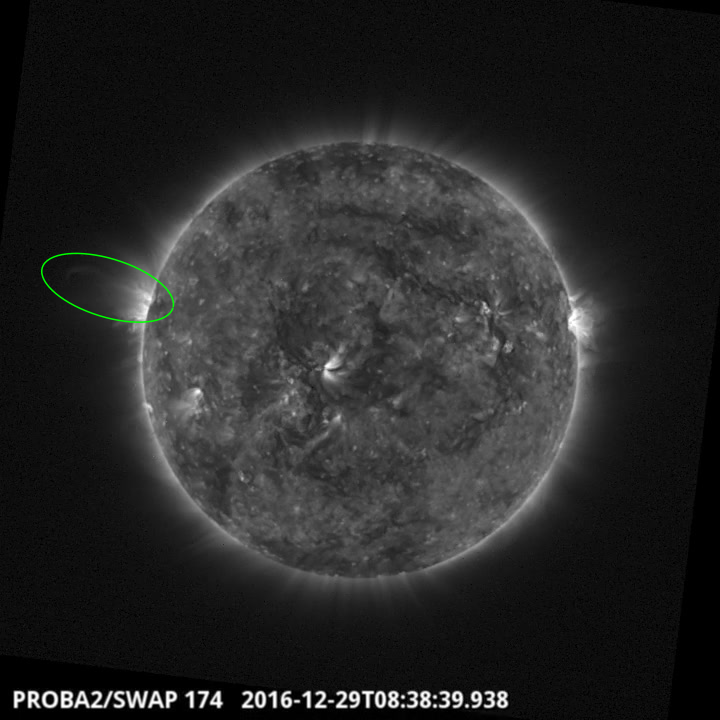
An eruption was observed by SWAP on the east limb of the Sun on 2016-Dec-29 at 08:38 UT
Find a movie of the event here (SWAP movie)
http://proba2.oma.be/swap/data/mpg/movies/20161229_swap_movie.mp4
Review of geomagnetic activity
At the start of the week (26 December), solar wind speeds (yellow curve underneath) of about 700 km/s were registered by DSCOVR due to a high speed stream associated with a positive coronal hole. Solar wind speed then gradually decreased till about 300 km/s early on 31 December. Starting around 09UT, solar wind speed increased to values near 560 km/s around 19UT on 31 December due to the effects from a Co-rotating Interaction Region (CIR) in front of the high speed stream from another positive coronal hole. The magnitude of the Interplanetary Magnetic Field (IMF; white curve) was above 10 nT between 09 and 19UT and mostly directed away from the Sun (blue curve). Bz (red curve) fluctuated heavily during this period, which means there was no long period in which it was consistently below -5 nT.
A single NOAA Kp=5 interval was registered around 00UT on December 26. Geomagnetic activity was quiet to active during the remainder of the week.
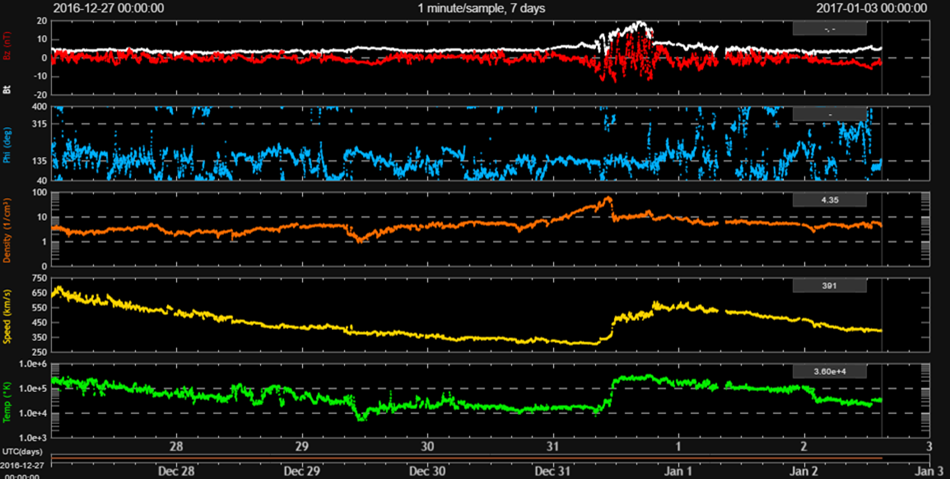
Review of ionospheric activity (26 Dec 2016 - 1 Jan 2017)
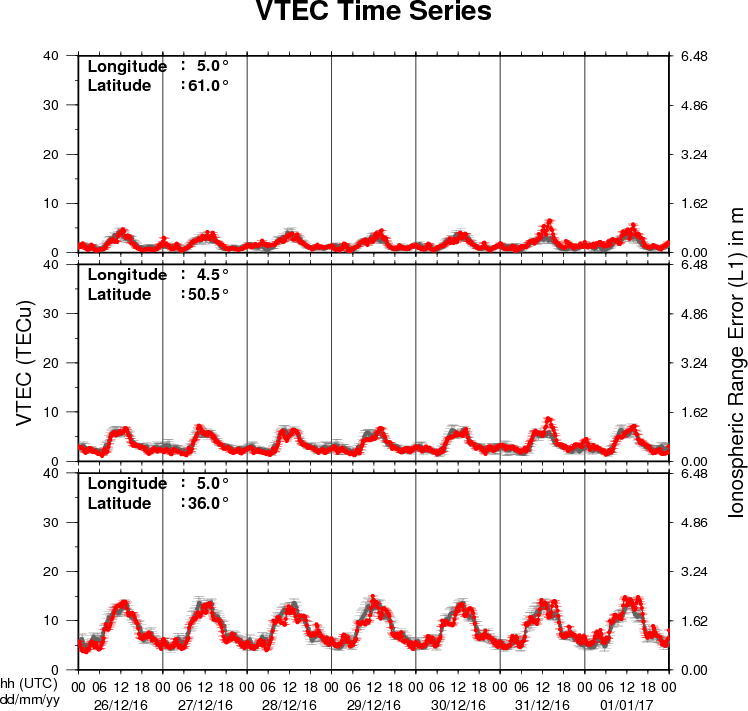
The figure shows the time evolution of the Vertical Total Electron Content (VTEC) (in red) during the last week at three locations:
a) in the northern part of Europe(N61°, 5°E)
b) above Brussels(N50.5°, 4.5°E)
c) in the southern part of Europe(N36°, 5°E)
This figure also shows (in grey) the normal ionospheric behaviour expected based on the median VTEC from the 15 previous days.
The VTEC is expressed in TECu (with TECu=10^16 electrons per square meter) and is directly related to the signal propagation delay due to the ionosphere (in figure: delay on GPS L1 frequency).
The Sun's radiation ionizes the Earth's upper atmosphere, the ionosphere, located from about 60km to 1000km above the Earth's surface.The ionization process in the ionosphere produces ions and free electrons. These electrons perturb the propagation of the GNSS (Global Navigation Satellite System) signals by inducing a so-called ionospheric delay.
See http://stce.be/newsletter/GNSS_final.pdf for some more explanations ; for detailed information, see http://gnss.be/ionosphere_tutorial.php
Future Events
For more details, see http://www.spaceweather.eu/en/event/future
4th SOLARNET Meeting: The Physics of the Sun from the Interior to the Outer Atmosphere, in Lanzarote (Spain)
Start : 2017-01-16 - End : 2017-01-20
The IV SOLARNET MEETING 'The physics of the Sun from the
interior to the outer atmosphere' will take place in Lanzarote
(Spain) from 16th to 20th of January 2017, organized by the
Instituto de AstrofÃsica de Canarias (IAC).
SOLARNET (High-resolution Solar Physics Network) is an EU-FP7
project coordinated by IAC with the aim of bringing together and
integrating the major European research infrastructures in the
field of high-resolution solar physics. SOLARNET involves all
pertinent European research institutions, infrastructures, and data
repositories. Networking activities, access to first-class
infrastructures and joint research and development activities are
being covered under SOLARNET to improve, in quantity and quality,
the service provided by this European community.
The purpose of this conference is to provide a coherent picture
of the Sun as a single physical system playing all the underlying
physical processes measured and observed in the solar atmosphere to
date.
Website:
http://www.iac.es/congreso/solarnet-4meeting/
Solar Orbiter Workshop 7: Exploring the solar environs in Granada, Spain
Start : 2017-04-03 - End : 2017-04-06
This event will be hosted by the Instituto de Astrofisica de
Andalucia - CSIC. Please mind that on April 7th the 20th SWT
meeting will take place at the same venue.
Website: Unkown
